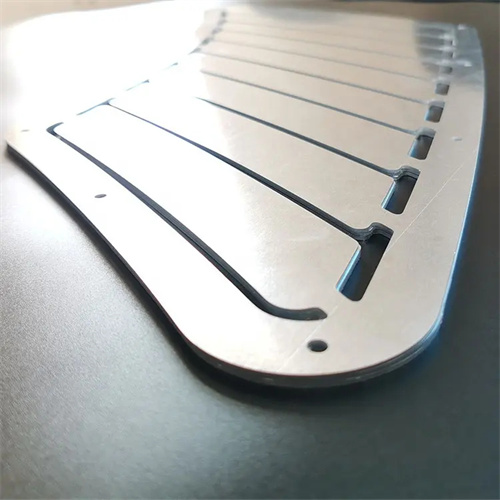Nickel and nickel alloy wires for vacuum devices
Nickel and nickel alloy wire for vacuum devices is a fine, filamentous material used in core components such as filaments, leads, and gates in vacuum electron tubes, ion tubes, and microwave tubes. Leveraging the excellent high-temperature resistance, low vapor pressure, and stable electrical properties of nickel and nickel alloys, they enable current conduction and signal control in high-vacuum, high-temperature environments. Diameters typically range from 0.01 to 1 mm, and materials primarily include pure nickel wire (N4, N6), nickel-tungsten alloy wire (Ni-W), and nickel-chromium alloy wire (Ni-Cr). Pure nickel wire is suitable for general vacuum applications, while alloy wire is used in applications requiring high temperatures (800-1200°C) or high hardness, such as the filaments of high-power transmitting tubes.

The production process for nickel and nickel alloy wire used in vacuum devices requires meticulous steps, including vacuum melting, ingot casting, hot rolling, cold drawing, bright annealing, and precision winding. First, electrolytic nickel with a purity of 99.95% or higher, or a suitably formulated alloy, is melted in a vacuum induction furnace at a vacuum of ≤ 1×10⁻³Pa and a temperature of 1400-1500 °C. Electromagnetic stirring ensures uniform composition. Pure nickel wires contain ≥ 99.5% nickel, and the tolerance for key elements (such as tungsten and chromium) in the alloy wires is ≤ ± 0.05% . The ingots are then remelted using a vacuum consumable electrode process to produce round ingots with diameters of 20-50mm . This process reduces gas content (oxygen ≤ 0.003% ) and non-metallic inclusions, ensuring the purity of the wire. Hot rolling heats the ingot to 900-1100 °C and rolls it into a wire billet with a diameter of 5-10mm. The rolling speed and reduction are controlled to avoid scale and cracks. Cold drawing is the core process for obtaining fine-diameter wire. It uses multiple passes, with a diameter reduction of 8%-15% per pass. Diamond dies and specialized lubricants (such as castor oil-based grease) are used to ensure a diameter tolerance of ≤±0.001mm and a surface roughness Ra ≤0.1μm. Bright annealing is performed under hydrogen protection. Pure nickel wire is heated to 600-700°C, while alloy wire is heated to 800-900°C. After holding for 0.5-1 hour, it is rapidly cooled to reduce the wire hardness to HV100-150 and an elongation of ≥25%, meeting the requirements of subsequent winding. Finally, the wire is wound into coils using a precision winding machine to ensure it is free of knots and scratches.

The performance advantages of nickel and nickel alloy wires used in vacuum devices make them irreplaceable in the vacuum field. First, excellent high-temperature stability. The tensile strength of nickel-tungsten alloy wire remains ≥ 400MPa at 1200 ℃ . It has excellent oxidation resistance, with an oxidation rate of ≤ 0.05g/(m²・h) , and can withstand the high-temperature working environment of the filament. Second, extremely low vapor pressure. The vapor pressure of pure nickel wire is ≤ 1×10⁻⁴Pa at 1000 ℃ . In a high vacuum environment of 1×10⁻⁶Pa , almost no gas is released, avoiding contamination of the vacuum chamber and ensuring the life of the device. Third, good plasticity and workability. After annealing, the wire can be wound into a spiral filament with a diameter of less than 1mm , and the minimum bending radius can reach 2 times the wire diameter without cracking. Fourth, stable electrical performance. The resistivity of pure nickel wire is ≤ 0.09Ω・mm²/m , and the temperature coefficient is small, which can ensure the stability of current conduction. Fifth, low magnetism. Pure nickel wire is paramagnetic at room temperature, with a magnetic permeability of ≤ 1.005μ₀ , to avoid interfering with the magnetic field distribution of electronic devices, and is suitable for devices sensitive to magnetic fields such as microwave tubes.

Nickel and nickel alloy wires for vacuum devices are key materials in a variety of high-end electronic devices. In broadcasting and television, high-power transmitting tube filaments utilize nickel-tungsten alloy wires with a diameter of 0.1-0.5mm. Spiral winding improves heating efficiency, enabling operating temperatures exceeding 1000°C. In microwave communications, klystron gates and cathode leads utilize pure nickel wires with a diameter of 0.05-0.2mm to ensure signal stability in high-frequency electric fields. In medical equipment, X-ray tube filaments utilize nickel-chromium alloy wires with a diameter of 0.03-0.1mm, enabling rapid heating and electron beam generation. In semiconductor manufacturing, ion implanters utilize ultrafine pure nickel wires (0.01-0.05mm in diameter) for filaments and electrode leads, designed to withstand the precise vacuum environment. In aerospace, traveling wave tubes for satellite communications utilize high-temperature-resistant nickel alloy wires to ensure long-term stable operation in the vacuum of space. With the development of 5G communications and aerospace technology, the requirements for wire fineness and reliability are increasing.

Industry trends indicate that nickel and nickel alloy wires for vacuum devices are trending toward ultra-fine diameters, high strength, and multifunctionality. Breakthroughs in ultra-fine wire production technology have enabled the stable production of pure nickel wire with a diameter of 0.005mm, suitable for miniature vacuum sensors. High-strength nickel alloy wires (such as Ni-W-Re alloys) have been enhanced by the addition of rare earth elements to increase their tensile strength to over 500 MPa at 1200°C, extending filament life. Surface coatings (such as ruthenium plating and nitriding) improve the wire’s wear resistance and emission performance, boosting electron emission efficiency by over 30%. Furthermore, intelligent production technologies are being promoted, employing online laser diameter measurement and tension control to ensure wire diameter uniformity. Green production processes (such as cyanide-free electroplating and the use of recycled nickel) reduce environmental impact and increase nickel recovery rates to over 90%. As vacuum electronic devices continue to miniaturize and increase their frequency, demand for high-performance nickel and nickel alloy wires will continue to grow, driving the industry to achieve greater breakthroughs in material research and development and precision processing technologies.
